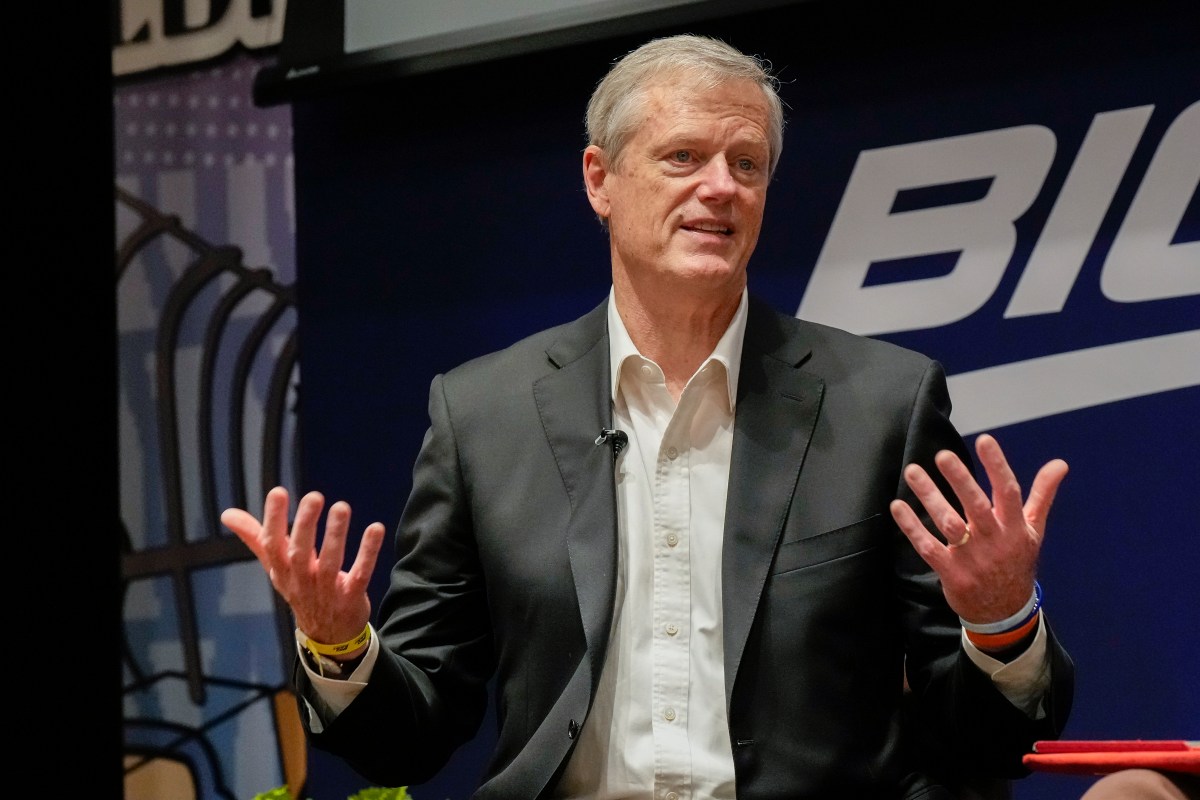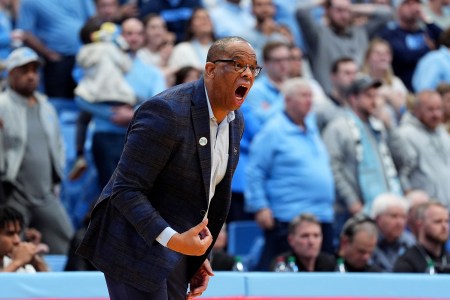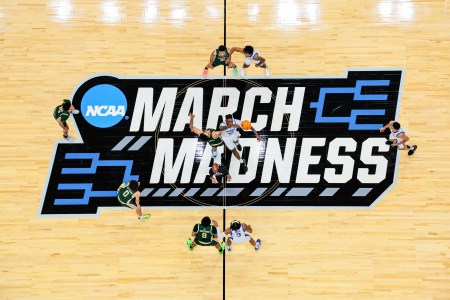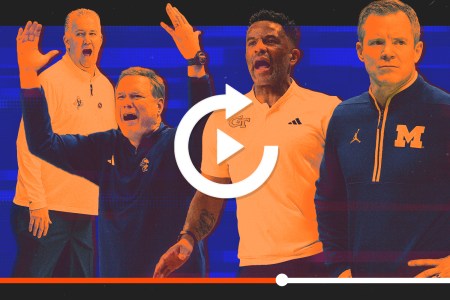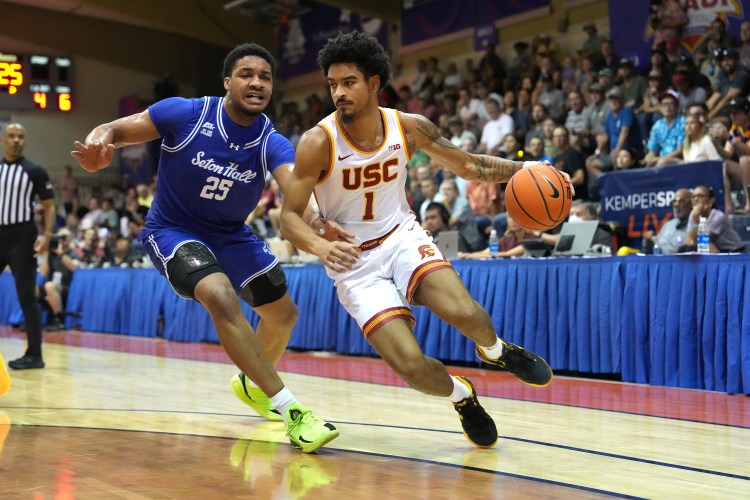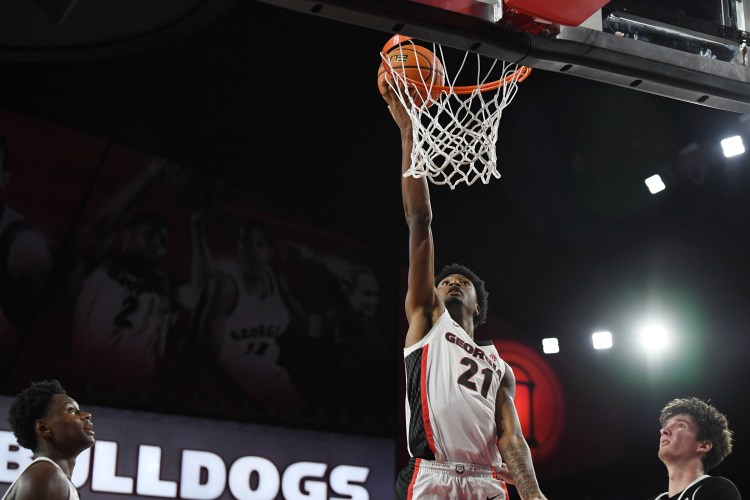With the 2025-26 college basketball season around the corner, the Big East hosted industry leaders at the Empire State Building in New York to discuss the state and future of the sport.
The roundtable event included a one-on-one conversation with NCAA President Charlie Baker and additional panels featuring Big East administrators, athletic directors, former coaches, business executives and more.
There remains tremendous uncertainty around many of the most pressing topics affecting college hoops, but the roundtable made clear just how much — and how rapidly — things are changing in the wake of the House settlement. Below are insights from the panelists on several hot-button issues.
Federal Bill
Baker expressed optimism that the NCAA can create a workable structure in the post-House world, but noted that “a little help from the federal government” would go a long way toward providing clarity on certain rules. In July, the House Energy and Commerce subcommittee advanced the SCORE Act, the proposed federal bill supported by the NCAA and major conferences. However, it has since lost momentum and is now being challenged by the opposing SAFE Act, which is the bill preferred by labor groups.
Asked about the general progress of a new law, Baker sounded hopeful that the sport has the attention of Congress and things are trending in the right direction: “I think our chances of getting something that looks more or less like the SCORE Act as it’s currently configured in the House, which deals with our three biggest issues — the rule piece, the sort of preemption on state laws where a lot of those laws are just designed to get schools in a particular state advantages over schools in other states, and defining once and for all that kids who play college sports aren’t employees — I think that thing has a pretty good chance of making it through the House at some point.”
NCAA Tournament Expansion
While the field will remain at 68 for the 2025-26 NCAA Tournament, Baker suggested that expansion could happen by next season. “I do not want to get ahead of the basketball committees on this one, but I would hope we could find a way to get there (by 2026-27),” he said.
Baker reiterated his overall support for expansion, calling it “an opportunity to give a bunch of worthy schools” a chance. “When you’re giving 32 automatic qualifiers every year in a field of 68, almost by definition it means you’re gonna leave a bunch of teams out of the Tournament who are probably among the 65 best,” he added. “You raise the size of the Tournament a little bit, you can pretty much guarantee that won’t be an issue going forward.”
The projected expansion model would raise the number of teams to 76. It would slash the First Four play-in tournament and introduce a new “opening round” of 24 programs, a mix of the lowest ranked at-large and automatic qualifiers. The 12 winners would advance to the Round of 64.
In a separate panel, Craig Robinson, the executive director of the National Association of Basketball Coaches, said that feedback from coaches on the subject has been predictably mixed. “The coaches from the conferences that would benefit from having more teams in are for having more teams in,” Robinson explained. “The coaches from the conferences that would suffer from having more teams in don’t want more teams in. But everyone says that they want what’s best for the student-athletes, which would be more teams in.”
Transfer Portal Window
With the number of transfers skyrocketing in today’s landscape, much has been made about when the portal opens. The date was moved back a week in 2025 — from March 18 to March 24 — but still landed in the middle of the NCAA Tournament, giving teams that failed to make it or were eliminated an advantage over those remaining in the field.
It sounded unlikely that the 30-day portal window will be shifted dramatically in the near future, as Baker outlined the challenges of doing so. “There is no time at which that is going to be ideal, because you’re trying to figure out a way to set up a point in time that works from an academic calendar and works on a seasonal calendar, which is very challenging,” he said. “The number of kids who are now playing when the portal opens is pretty thin. But the conversations — who knows when they start?”
Recruiting/Retaining Players
During a panel on the “Campus and Coaching Climate,” former Villanova head coach Jay Wright shed light on the nature of recruiting in the modern era. Coaches used to spend hours at players’ homes, dissecting subjects such as academics, internship opportunities and the professional networks that their institutions could provide. “There are no conversations about that right now,” Wright said. “Most coaches don’t do home visits anymore. They just have a sit-down meeting with the agent and the student-athlete and they talk about how much playing time do I have, where am I going to fit in on the roster and how much are you going to pay me. That’s what the decision is based on.” Those drastic changes have left coaches scrambling to adjust their strategies.
Robinson also noted how challenging it has been for coaches to retain players in the chaotic present climate. “That is a full time job now from the middle of your season, because guys are getting calls from their agents,” he said. “So you’re talking January all the way through until the portal is finished.”
UConn athletic director David Benedict provided insight into how coaches Dan Hurley and Geno Auriemma have found success when it comes to player retention, beyond fundraising efforts. “I think part of that is the work that they do on the front end to determine who fits in their programs, because not everybody will,” he said. “With respect to Dan and Geno, they haven’t lost their identities. They know who they are, and they’re unwilling to deviate to get someone who some people might think is the next best thing.”
Men’s and Women’s Combined Final Four
Along with many other leaders in the sport, Big East Commissioner Val Ackerman has been an advocate for hosting the men’s and women’s Final Fours in the same city, rather than at two separate sites. According to Baker, the concept has been discussed extensively by both the men’s and women’s basketball committees over the years, but has not been pursued for a variety of reasons. At a minimum, the committees must honor their existing contracts — host cities have been selected through 2031.
“So far, I think they’ve been happy with the experience they’ve had owning the cities they’re each in,” said Baker. “I understand where Val is coming from. I talk to her a lot about it. But I think that’s one where the committees wrestle with it, but generally speaking, both feel pretty good about the trajectory of each of their tournaments.”

